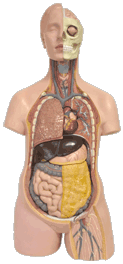At WiseGEEK, we're committed to delivering accurate, trustworthy information. Our expert-authored content is rigorously fact-checked and sourced from credible authorities. Discover how we uphold the highest standards in providing you with reliable knowledge.
What is the Ubiquitination of Proteins?
The ubiquitination of proteins is a regulatory process that occurs within a cell to degrade protein molecules. During the process, small proteins known as ubiquitins attach themselves to the protein molecules that are to be degraded. These ubiquitin molecules effectively signal the protein for degradation by a proteosome, or protein degrader. There are several steps in the ubiquitination of proteins, all of which are important for normal cellular processes, as cells are constantly creating and degrading new proteins in response to environmental changes.
First, the ubiquitin molecule must be activated in order to label other proteins, a step that is accomplished by the ubiquitin-activating enzyme, E1. This step in the ubiquitination of proteins is energy-dependent, meaning that it requires the cell to expend energy through adenosine triphosphate (ATP). E2, or ubiquitin-conjugating enzyme, is used in the second step in the process, where another chemical reaction known as a transthioesterification occurs.

Once the ubiquitin has passed these two steps, it binds to E3, or ubiquitin-protein ligase. There are over 100 E3 enzymes in human cells, each of which is specific for one protein, known as the substrate or target protein. Since there are also many E2 molecules, the various combinations of the three main enzymes allow for a high level of specificity for each substrate. This helps a cell carefully monitor intracellular conditions and streamline the process of selecting proteins for degradation. The activated E3 enzyme will bind to both the substrate and the ubiquitin molecule, joining the two molecules and carrying on the ubiquitination of proteins throughout the cell.
At least three or four ubiquitin molecules are usually needed to signal the protein substrate to be degraded by the proteosome. Further ubiquitination of proteins can often be accomplished by the same E3 that initiates the first addition of a ubiquitin molecule. Once the substrate has a sufficiently long ubiquitin chain, the proteosome will envelope it and degrade it back into amino acids, the building blocks for larger proteins.
The ubiquitination of proteins does not always signal a molecule for degradation. Ubiquitin molecules sometimes direct a substrate to move to another part of the cell, while other times they will simply alter its function. When ubiquitin is used for these signal purposes it’s generally present as only one attached unit, although there are a few rare instances where more than one ubiquitin molecule will still act to modify, as opposed to degrade. Cells also contain special enzymes known as deubiquitinases that can remove ubiquitin molecules from labeled proteins and reverse the process.
AS FEATURED ON:
AS FEATURED ON:










Discuss this Article
Post your comments